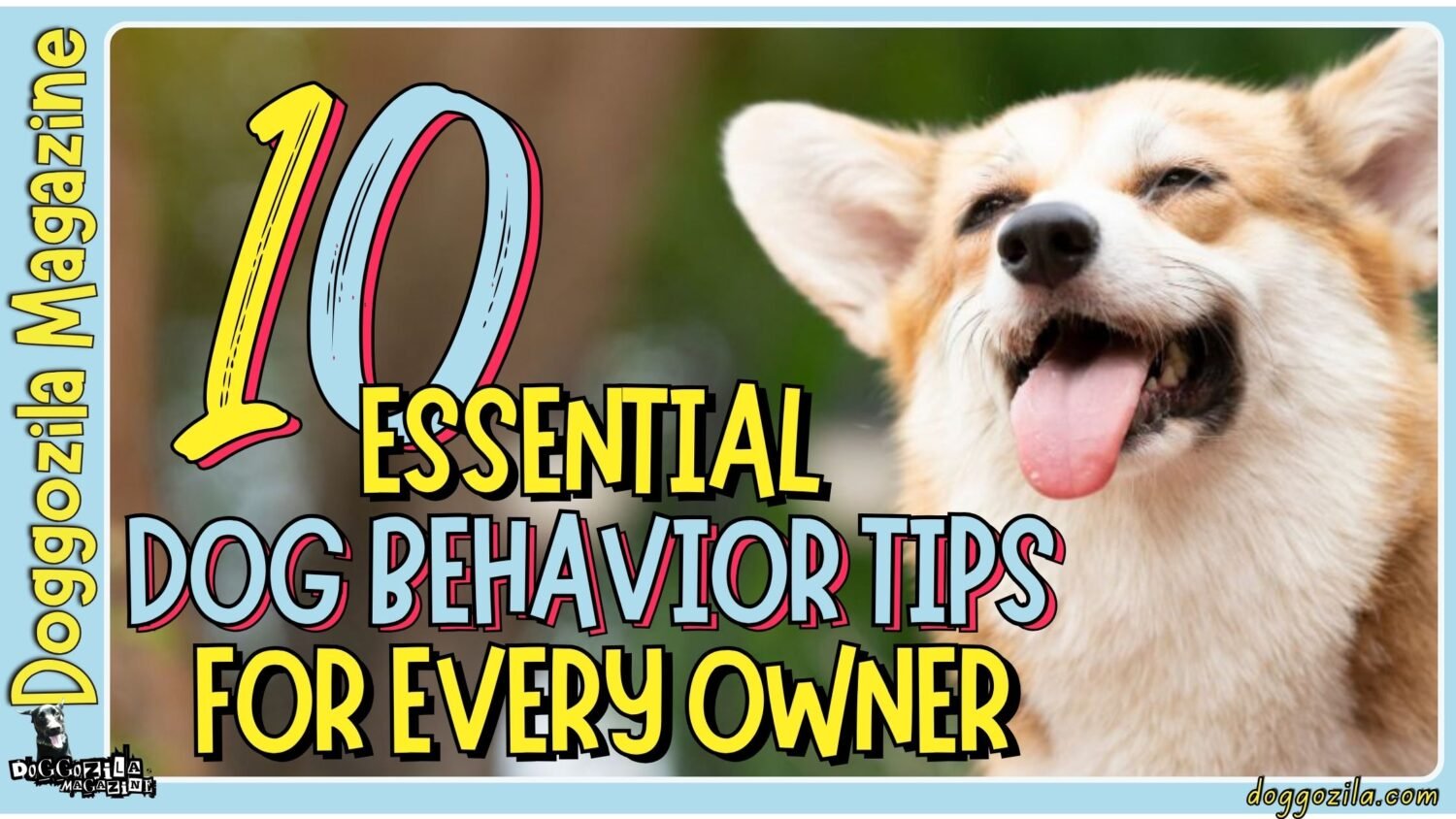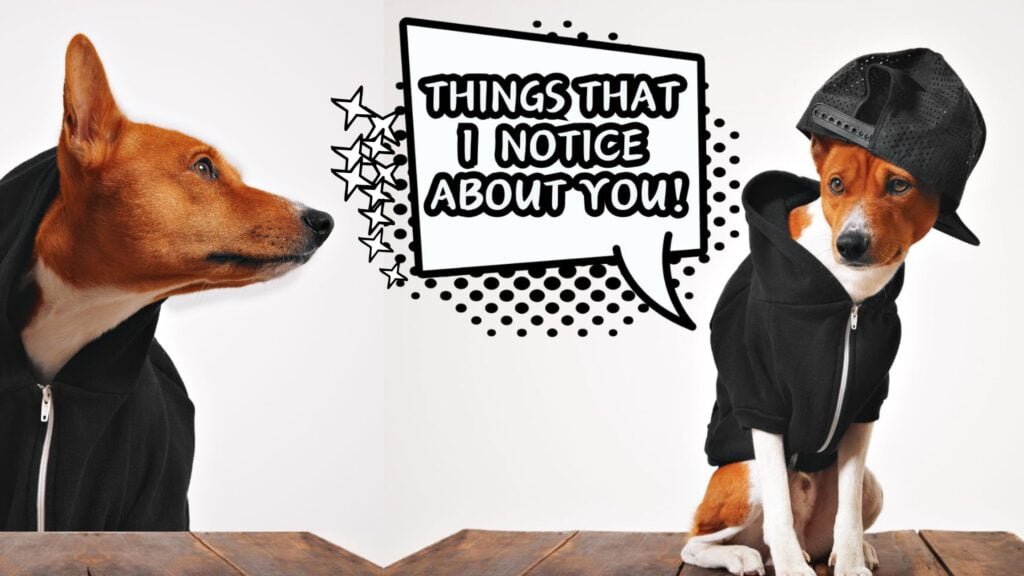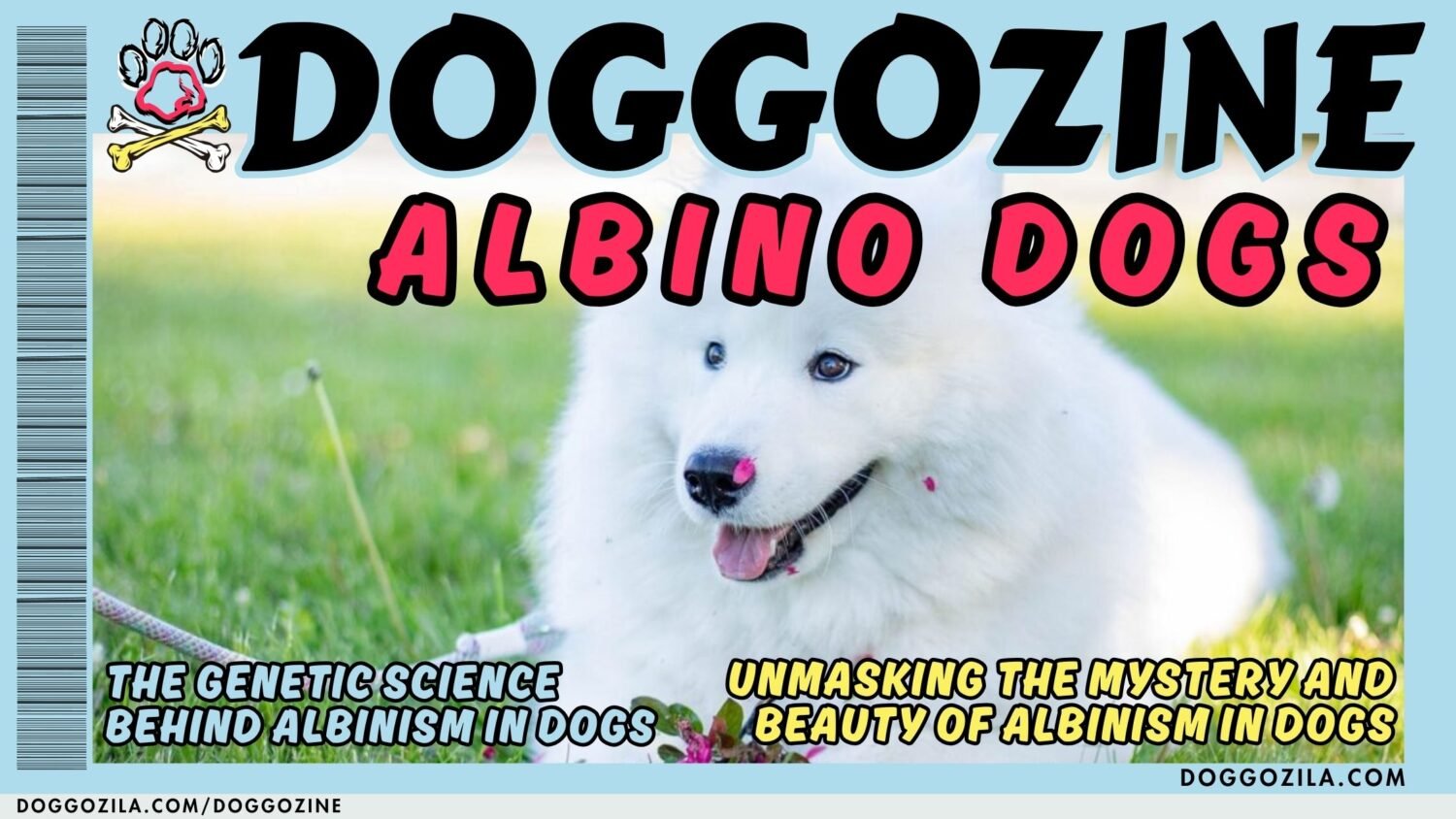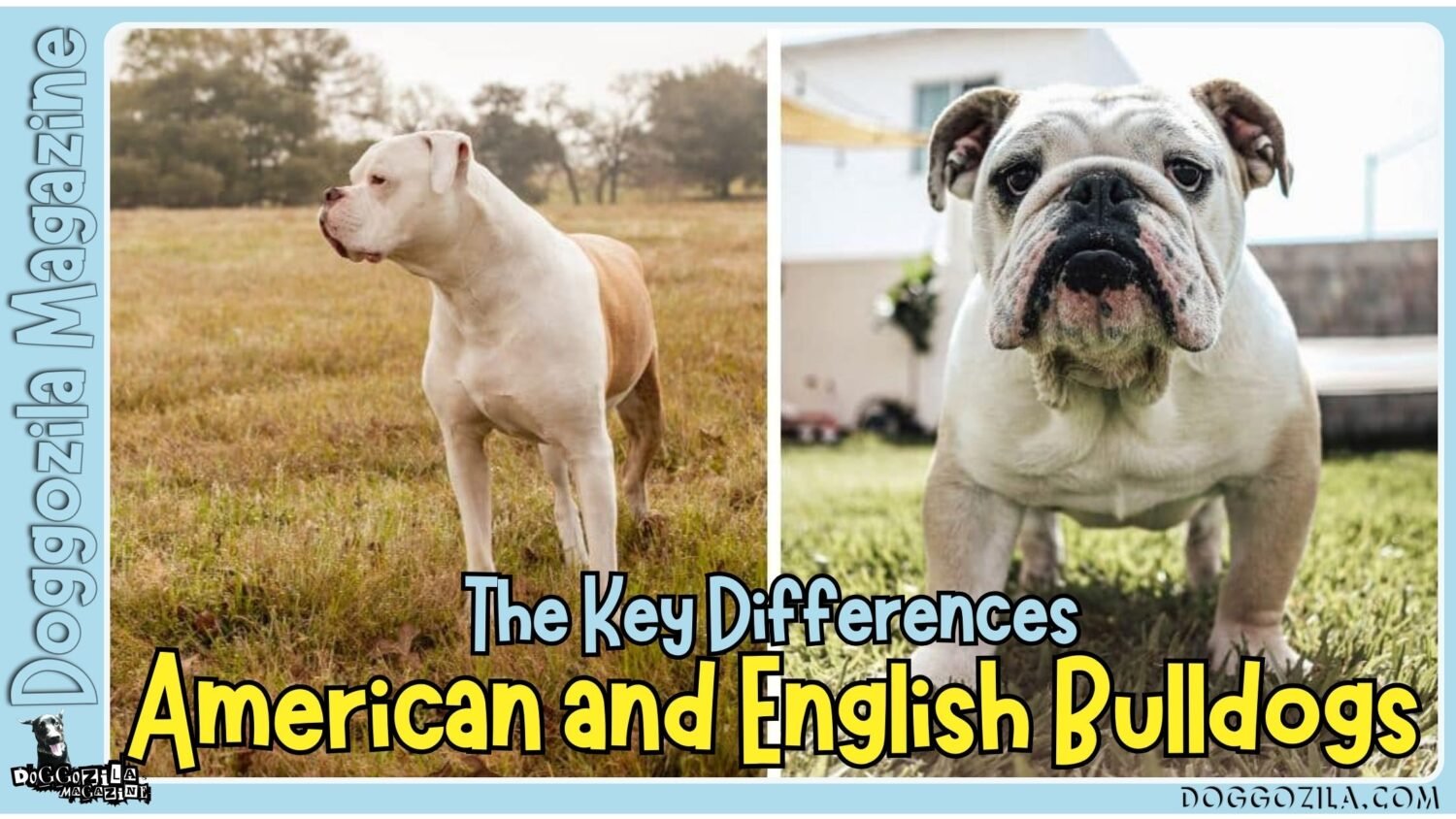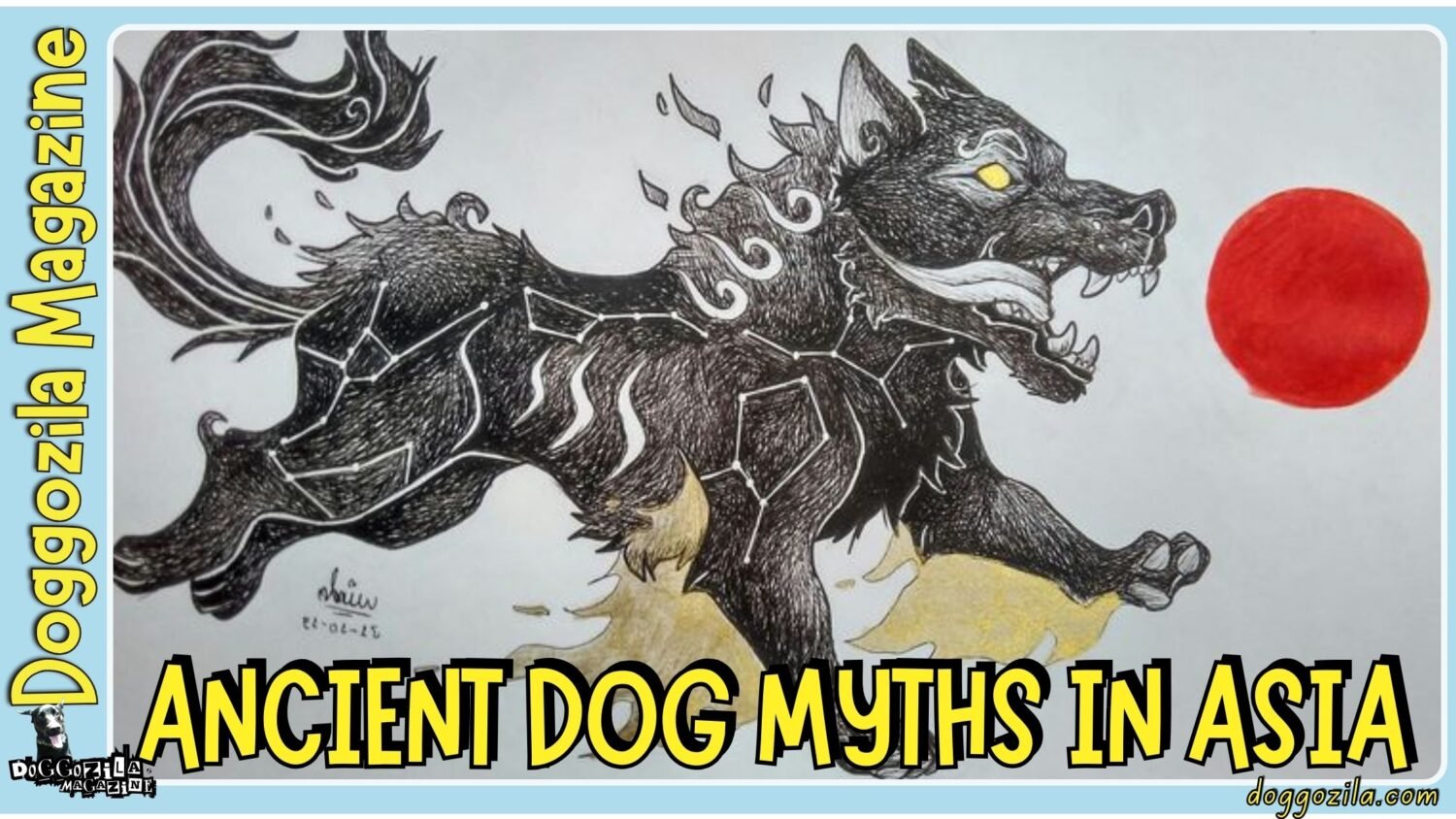Dear pack leaders and paw-rents, can you picture this:
You finally snag that perfect, sun-drenched spot on the couch, coffee in hand, only to discover your furry friend, hunched over a stolen sock like it’s Fort Knox. A low rumble vibrates in his chest as you go inch closer. Your heart skips a beat. But take a deep breath, understanding why your dog guards that sock like its gold is the first step to harmony. Welcome to the complex, often misunderstood world of resource guarding in dogs.
It’s not malice, it’s millennia-old instinct crashing into modern life. It’s scary, frustrating, and sometimes downright baffling. Resource guarding in dogs isn’t about your pup being greedy, spiteful, or trying to dominate the household, it’s a deeply ingrained survival mechanism whispering tales from their wild ancestors. Let’s dive into this canine conundrum together and turn those tense moments into trust-building opportunities!
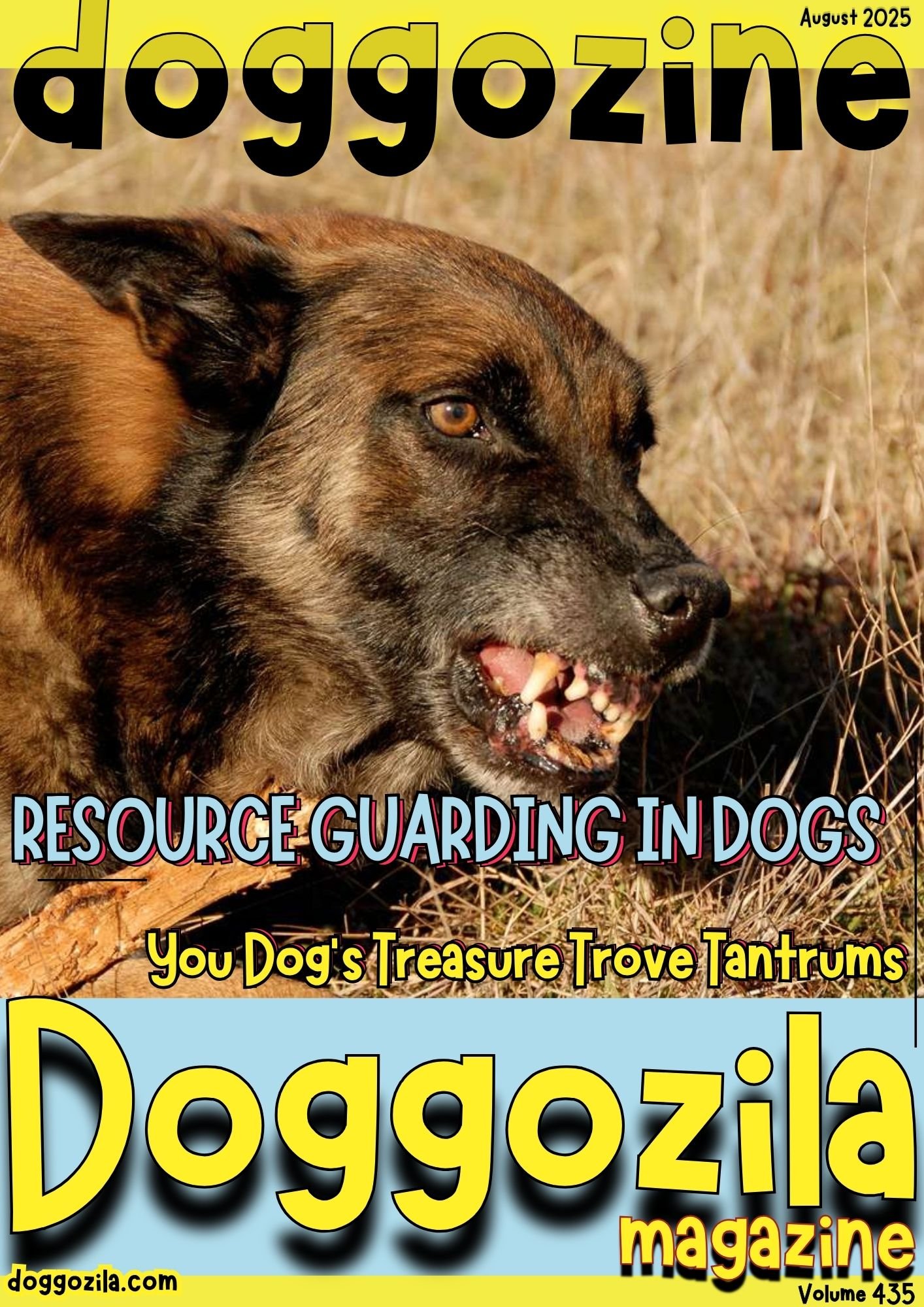
UNRAVELING THE MYSTERY: WHAT EXACTLY IS RESOURCE GUARDING IN DOGS?
Resource guarding in dogs isn’t about your pup being greedy, spiteful, or trying to dominate the household, it’s a deeply ingrained survival mechanism whispering tales from their wild ancestors. Essentially, it’s any behavior a dog uses to keep others away from something they perceive as valuable, be it a high-value chew toy, a comfy bed, a tasty morsel of food, or even you! Think of it as their internal alarm system blaring, “Mine! Back off!“
This behavior exists on a wide spectrum, ranging from subtle avoidance (like turning their body away) to overt aggression (growling, snapping). It’s their way of saying, “I’m worried I might lose this good thing.“
The Ancient Roots: Why Does Resource Guarding in Dogs Happen Anyway?
Let’s rewind the clock – way back. Your fluffy couch companion shares DNA with wolves and wild canids who lived in a world of uncertainty. For them, successfully guarding a freshly caught rabbit or a safe den spot meant the difference between survival and starvation.
Fast forward to today, and while your dog’s bowl is reliably filled twice a day, that ancient wiring hasn’t magically disappeared. Resource guarding in dogs is triggered when a dog perceives a threat to something they value highly, and their genetic programming kicks in to protect it.
Factors influencing this include genetics (some breeds, like terriers bred for tenacity, might be more prone), early experiences (a history of scarcity or competition), and even learned behavior (if growling successfully made someone back off before, they’ll try it again). It’s a complex interplay of nature and nurture, making understanding resource guarding in dogs essential to seeing it from their perspective.
From Socks to Steak: What Kinds of Treasures Trigger Dogs to Guard Resources?
You might be surprised by what your dog deems worthy of guarding! While food guarding (especially high-value items like bones, bully sticks, or human food scraps) is incredibly common, resource guarding in dogs can extend to a vast array of “treasures.”
This includes prized possessions like favorite toys (especially squeaky ones!), coveted resting places (the best dog bed, your spot on the couch, or even a sunny patch of floor), stolen items (socks, tissues, kids’ toys – the grosser, the better sometimes!), water bowls, and remarkably, sometimes even people.
A dog might guard their favorite human from other pets or even other family members. Recognizing the specific triggers for your dog is key to managing and modifying resource guarding in dogs effectively. What’s mundane to us can be priceless to them.
Spotting the Subtle Signs: Early Warnings of Resource Guarding in Dogs
Resource guarding in dogs often starts with whispers before it escalates to shouts. Learning to read your dog’s subtle body language is absolutely crucial for early intervention and safety. Watch for the “freeze“, that sudden, unnatural stillness when you approach while they have something.
Notice “whale eye” (showing the whites of their eyes while looking sideways at you), a stiffened body posture, lowered head over the item, or subtle lip licking unrelated to eating. They might subtly turn their body away from you or physically place themselves between you and the object.
A hard stare or pinned-back ears are also red flags. Ignoring these early signs of resource guarding in dogs means you might only notice the problem when it escalates to growling, snapping, or biting, much harder behaviors to manage. Tuning into these micro-signals is your superpower.
🔑 Key Points: Understanding that resource guarding in dogs is fundamentally about perceived scarcity and fear, not malice, is the crucial first step towards addressing it effectively and compassionately.
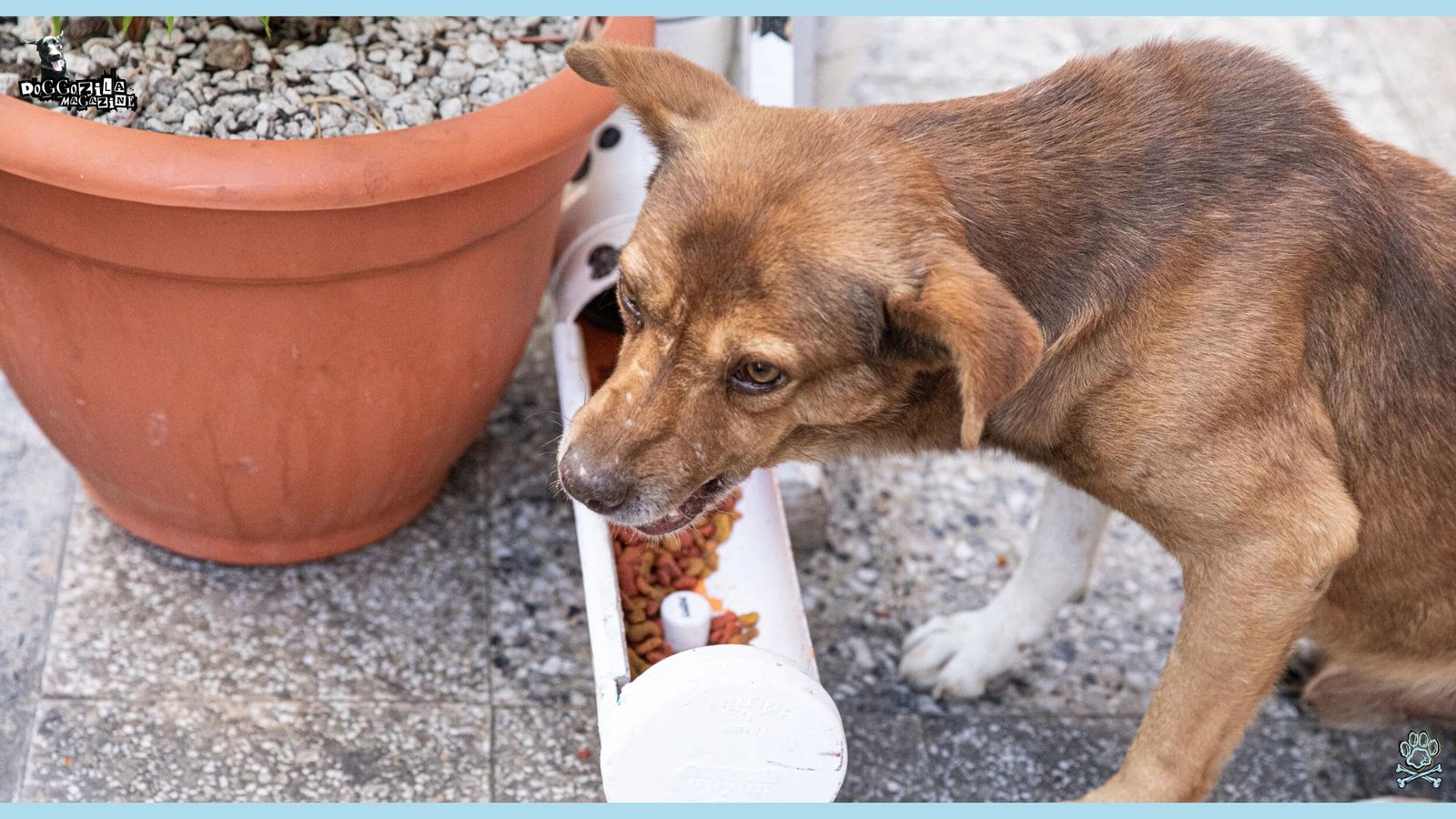
MYTHBUSTING RESOURCE GUARDING: SEPARATING FACT FROM FEARFUL FICTION
Let’s clear the air on some persistent and harmful myths surrounding resource guarding in dogs. One of the biggest myths? “Only abused or starved dogs guard their resources.” This is simply untrue and unfairly stigmatizes rescued dogs. Guarding exists across the spectrum of canine experiences. Another pervasive myth is labeling it as “dominance.” This outdated concept suggests the dog is trying to control the household hierarchy. Modern animal behaviorists and veterinary professionals overwhelmingly reject this view.
Landmark studies, like the extensive ASPCA research surveying hundreds of dogs with varying histories, found no direct correlation between a dog’s body condition (whether underweight or ideal weight) and the likelihood of food guarding.
The Body Condition Paradox and Other Science-Backed Surprises About Dogs Guarding Resources
That same groundbreaking ASPCA study offered fascinating insights that challenge common assumptions about resource guarding in dogs. They discovered that only a relatively small percentage (around 9.2%) of dogs actually showed overt aggression during controlled food bowl challenges, even when researchers deliberately pushed boundaries.
Most dogs exhibited much lower-level warnings like stiffening or growling. This highlights a crucial point, resource guarding in dogs is incredibly context-dependent. Your dog might fiercely defend a juicy steak bone left unattended on the counter but willingly trade a boring piece of kibble for a tasty treat. The value of the resource and the perceived level of threat dramatically influence their reaction.
Understanding this nuance is vital, it means not every interaction around resources is a potential battle, and responses can vary greatly. This complexity underscores the importance of individualized approaches to managing resource guarding in dogs.
Why Punishment Fails Miserably When Dealing With Dogs That Guard Resources?
The instinct when faced with a growling dog over a stolen shoe might be to yell, “Drop it!” forcefully, or worse, try to physically pry their jaws open. This is perhaps the biggest mistake owners make when confronting resource guarding in dogs. Punishment-based approaches (yelling, hitting, alpha rolls, forcibly removing items) are not only cruel but scientifically proven to be counterproductive.
Why?
They confirm the dog’s deepest fear, that you are indeed a threat who wants to take their valuable thing. This ramps up their anxiety significantly, making future guarding episodes more intense and likely. Punishment also suppresses the warning growl, which is actually a vital communication tool.
A dog who learns growling gets punished may skip the warning next time and go straight to a bite. Effective strategies for resource guarding in dogs focus on building trust and changing the dog’s emotional response, not intimidation.
Related Article Recommendation: How To Train Your Dog To Drop It? Step By Step Guide!
Beyond Food Bowls: Unpacking Possession Aggression and Toy Guarding in Dogs
While food guarding is frequently discussed, resource guarding in dogs manifests powerfully around possessions too, often termed “possession aggression” or “toy guarding.” This occurs when a dog aggressively protects inanimate objects they consider valuable.
Common triggers include high-value chews (antlers, rawhides – though use caution with these!), specific toys (especially those used in tug-of-war or fetch), stolen items (socks, remotes), or even found objects like sticks or rocks on walks. The intensity of resource guarding in dogs around toys can vary, one dog might gently pick up a toy and walk away, while another might freeze and growl if you glance in their direction.
Understanding this aspect broadens our view of resource guarding in dogs beyond just meals and helps us identify all potential triggers in our homes and environments. Managing toy guarding often involves careful supervision, teaching reliable “drop it” and “leave it” cues positively, and sometimes limiting access to certain high-trigger items.
🔑 Key Points: Resource guarding in dogs is rooted in anxiety and fear of loss, not a calculated power play. Believing the dominance myth often leads to confrontational, punishment-based methods that worsen the problem and damage trust.

DECODING DOG CRYPTOGRAPHY: THE BODY LANGUAGE OF RESOURCE GUARDING
Your dog is constantly communicating, especially when they feel vulnerable about a resource. Resource guarding in dogs has a distinct body language vocabulary, and becoming fluent is essential for prevention and safety. It starts subtly. Notice the “hard stare“, that laser-focused, unblinking gaze fixed on the approaching “threat” (you, another pet). Watch for body stiffness, a frozen posture, often low to the ground over the item.
The classic “whale eye” (showing the sclera/white part of the eye) while turning their head slightly away signals significant anxiety. Lip licking (when not eating), yawning (a stress signal), or a tightly closed mouth are subtle signs. Ears pinned back flat against the head are a major red flag.
Flight or Fight? Recognize the Two Personalities of Dogs That Guard Resources
Dogs generally exhibit two primary styles when it comes to resource guarding in dogs, reflecting their individual temperament and stress response, the “Flight” guarders and the “Fight” guarders.
Flight-style guarders are the hoarders and bolters. Their primary strategy is avoidance. Dogs might snatch the item and immediately run away to consume it in secret, under the bed, behind the couch, or in their crate. They might also rapidly ingest the item (“gulping“) before anyone can take it.
Fight-style guarders, on the other hand, stand their ground. They freeze over the item, glare, and escalate through growling, snarling, snapping, or biting if the perceived threat persists.
It’s crucial to understand that resource guarding in dogs isn’t always fixed, a dog might be a flight guarder with food but a fight guarder with a specific high-value toy, or their style might shift based on the context and perceived value of the resource. Identifying your dog’s primary style helps tailor management and training.
The Silent Treatment and Other Easily Missed Cues of Dogs That Guard Resources
Not all signs of resource guarding in dogs are overt or dramatic. Some of the most telling signals are incredibly subtle and easily overlooked, especially in busy households. Pay close attention to changes in behavior when you approach. Does your normally wiggly, happy dog suddenly become intensely focused on chewing and ignore you completely?
This “ignoring” can be a form of avoidance guarding. Does their chewing rhythm change, becoming faster, slower, or more deliberate? A slight tensing of the shoulders, a subtle shift of their body weight to block your access, or even a brief pause in chewing as you walk by can be early indicators of resource guarding in dogs. Learning these micro-signals requires keen observation.
Start by simply watching your dog when they have something they enjoy, noting their posture, eye movement, and chewing patterns before you approach. Then, observe the subtle shifts that occur as you move closer. This awareness is your first line of defense in preventing escalation and building a proactive plan for managing resource guarding in dogs.
From Freeze to Bite: The Escalation Ladder of Dogs That Guard Resources
Resource guarding in dogs typically follows a predictable escalation pattern, often visualized as a ladder. Understanding this progression is critical for safety and intervention timing. At the very bottom rung are the subtle avoidance and anxiety signals, freezing, subtle body shifting, whale eye, lip licking, avoiding eye contact. The next step up involves more overt avoidance, turning the head or body fully away, physically moving the object away, or gulping it down quickly.
Then comes the stiffening of the body, lowering the head over the object, and hard staring. Audible warnings like low growling or snarling mark a significant escalation, this is the dog clearly saying, “Stop! I’m uncomfortable!” Ignoring this often leads to air snaps (biting near but not making contact) or inhibited bites (making contact but not breaking skin).
At the top of the ladder are full, uninhibited bites intended to cause injury. The goal in addressing resource guarding in dogs is to recognize the signs early on the ladder and change the situation long before growling or biting occur. Never punish a growl, it’s a vital warning system! Thank your dog for communicating and back off.
🔑 Key Points: As anxiety escalates, you might see a lifted lip (showing teeth), a low growl deep in the chest, or a head lowered protectively over the object. Recognizing these early signs of resource guarding in dogs allows you to intervene calmly before it escalates to snapping or biting.

HOW HUMAN ACTIONS CAN TRIGGER RESOURCE GUARDING IN DOGS?
Common human triggers include reaching towards a dog who is eating or chewing (even just to pet them), attempting to forcibly take something away (“Drop it!” followed by grabbing), physically moving the dog off furniture or a bed, hovering over the dog while they eat, or engaging in rough play like tug-of-war without clear rules that can blur boundaries around possession.
Research, like a notable 2018 survey published in the Journal of Veterinary Behavior, indicated that owner behavior significantly influenced guarding severity. For example, dogs whose owners routinely reached into their food bowl or took food away during meals were found to be three times more likely to show aggression around food than dogs whose owners practiced hands-off or positive association techniques.
The Forced Retrieval Trap: Why “Taking Stuff Away” Backfires
One of the most common, yet counterproductive, pieces of outdated advice for resource guarding in dogs is to “show them who’s boss” by forcibly taking items away, especially food bowls during meals. This approach, often called “forced retrieval” or “alpha bowl taking,” is a recipe for disaster. Imagine you’re savoring your favorite dessert, and someone suddenly snatches the plate away without warning.
You’d feel startled, violated, and probably pretty defensive next time! That’s exactly how your dog feels. Forcing interactions confirms their fear that humans are unpredictable thieves, directly escalating their anxiety and defensive aggression around resources. This method actively teaches the dog that guarding is necessary.
Instead of building trust, it shatters it, making resource guarding in dogs worse over time. It also risks getting bitten. Effective solutions focus on cooperation and choice, not confrontation. Ditch the forced retrievals, they simply don’t work for managing resource guarding in dogs.
Building Bridges, Not Battles: Baby Steps to Trust With Resource Guarding Habits
So, how do you start fixing the trust deficit caused by resource guarding in dogs? The answer lies in counter-conditioning and desensitization (CC/DS), essentially, changing how your dog feels about you approaching their treasures. This isn’t a quick fix, it’s a journey requiring patience and consistency.
Start by identifying your dog’s “threshold“, the distance at which they notice you but don’t show any guarding signals. If they growl when you’re 5 feet away, start at 8 feet. Arm yourself with incredibly high-value treats (think real chicken, cheese, steak) that are way better than whatever they have.
The core principle is simple, pair your presence (and later, your approach/movements) with amazing things. The goal is for your dog to think, “Oh! When a human comes near my bone, chicken rains from the sky! Humans near my stuff = GOOD THINGS HAPPEN!” This positive association is the foundation for overcoming resource guarding in dogs.
The Magical “Trade-Up” Game: A Lifesaver for Resource Guarding in Dogs
One of the most powerful practical tools for managing resource guarding in dogs is mastering the “Trade-Up” game. This teaches your dog that giving up something they have leads to something even better, making them willing participants instead of defensive guards. Never trade for something of equal or lesser value!
Here’s how it works:
- Start boring: Begin when your dog has a low-value item (like an old chew toy or a piece of kibble). Have an amazingly high-value treat ready (diced chicken, cheese, liverwurst).
- Toss, Don’t Grab: From a safe distance, toss the incredible treat near your dog. As they go to get it, they naturally drop or leave the lower-value item. Let them have the treat!
- The “Trade” Cue: As they reliably go for the treat, add a cheerful cue as you toss it, like “Trade!” or “Swap!”
- Gradual Progression: Slowly work up to slightly higher-value items as your dog gets comfortable and eager for the trade. Always trade up! If they have a medium-value bone, trade for chicken. If they have chicken, trade for steak!
- Retrieving the Item: Only once the trade is reliable and happy, can you calmly pick up the traded item after they are fully engaged with the high-value treat. Eventually, you can give the original item back sometimes to build even more trust.
This game transforms potential conflicts into positive interactions, significantly reducing stress around resource guarding in dogs.
🔑 Key Points: It’s a tough pill to swallow, but our own well-meaning (or sometimes not-so-well-meaning) actions can inadvertently trigger or worsen resource guarding in dogs. Becoming aware of our own actions is a huge step in preventing resource guarding in dogs.
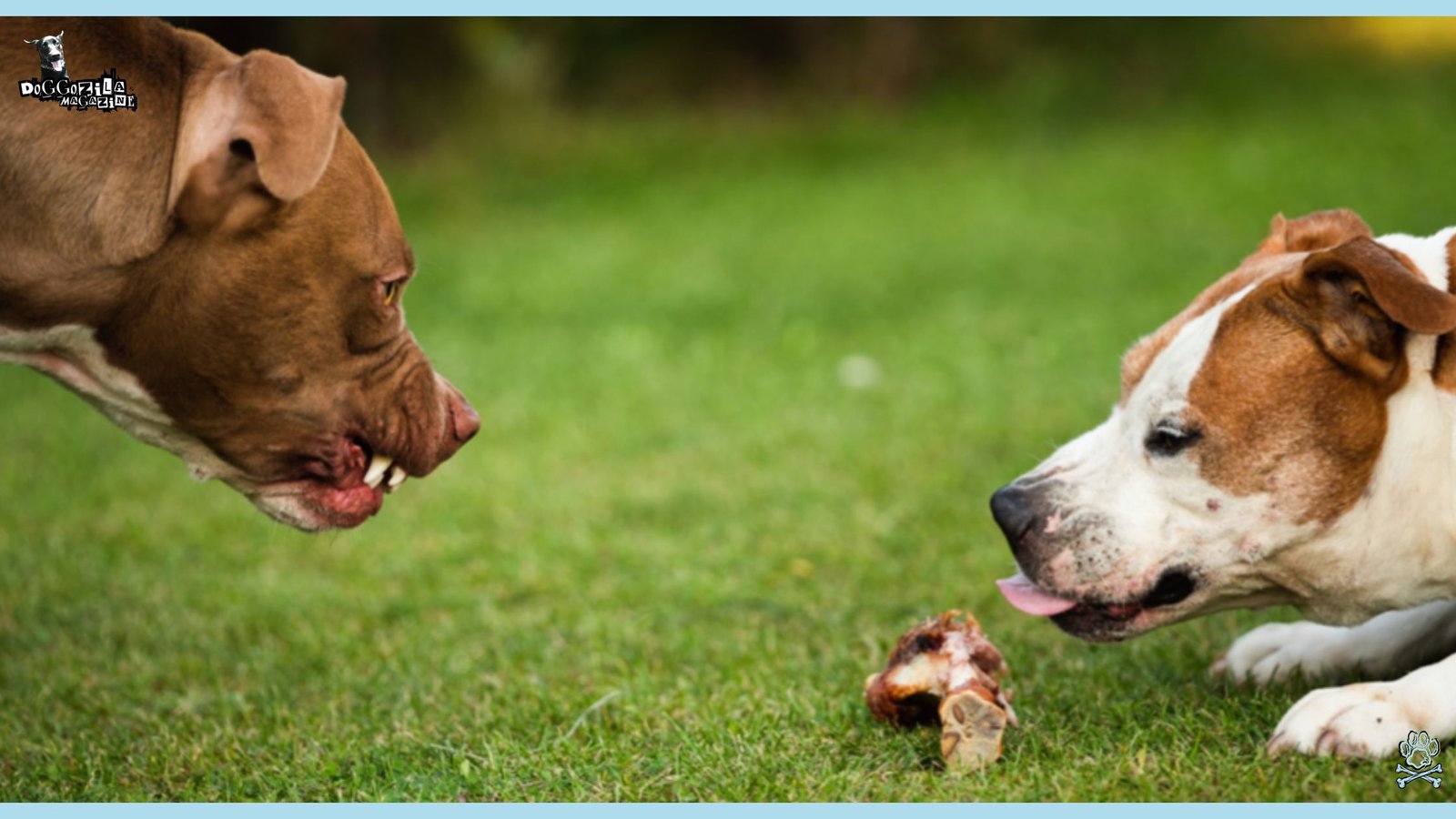
WHEN SIBLINGS SPAR: NAVIGATING INTER-DOG RESOURCE GUARDING
Resource guarding in dogs isn’t always directed at humans, it frequently flares up between dog housemates, creating tension and potential fights in multi-dog households. This dynamic, often called inter-dog aggression around resources, involves one dog guarding items, spaces, or even people from another dog.
Dr. Jacobs’ research highlighted that multi-dog homes often see more avoidance tactics (like one dog taking a toy to another room) than outright aggression, but the potential for escalation is real and requires careful management to prevent resource guarding in dogs from causing serious rifts or injuries.
Reading the Room: Signs of Tension in Multi-Dog Homes from Resource Guarding
Spotting resource guarding in dogs directed at other dogs requires vigilance for subtle body language exchanges. Watch for hard stares between dogs over an item or space, body blocking (one dog positioning themselves between the resource and the other dog), subtle lip curls or low growls when another dog approaches, hovering possessively over a toy or chew without engaging with it, or a dog rushing to grab something as soon as the other dog shows interest.
Tension might manifest as one dog freezing while the other approaches, piloerection (raised hackles), or low posture. More overt signs include snapping, snarling, lunging, or full-blown fights. Early intervention is key to preventing resource guarding in dogs from escalating into dangerous conflicts between your pets. Never assume they’ll “work it out themselves“, they often need our help to set boundaries.
Peace Treaties and Safe Zones: Managing Multi-Dog Resource Guarding Problems
Effective management is non-negotiable in homes with resource guarding in dogs between pets. Prevention is always better than breaking up a fight.
Key strategies include:
- Separate Feeding Zones: Feed dogs in completely separate rooms, crates (if crate-trained and comfortable), or using sturdy baby gates. Pick up bowls immediately after meals. Never leave food or high-value chews down unsupervised.
- Duplicate High-Value Items: If one dog guards a specific type of toy or bed, provide identical ones in different areas. Supervise closely during use. If guarding occurs, remove the item.
- Supervised Play & Toy Rotation: Only allow access to highly coveted toys during closely supervised play sessions. Rotate toys so no one toy becomes an obsession. Teach a solid “Drop It” using the trade-up game individually.
- Respect Resting Spaces: Teach dogs to respect each other’s chosen resting spots. If one dog consistently guards a bed, provide multiple equally comfortable options in different locations. Consider crate time for each dog to have guaranteed safe space.
- Fair Attention: Be mindful of distributing attention. If one dog guards you, practice calling the other dog over for treats and pets while the first dog is calmly resting elsewhere, gradually decreasing distance if they remain relaxed.
Managing the environment significantly reduces opportunities for resource guarding in dogs to cause conflict.
Teaching Tolerance: Exercises to Reduce Inter-Dog Resource Guarding Habits
Beyond management, you can work on building tolerance and positive associations between dogs around resources, always prioritizing safety and keeping interactions below threshold:
- Parallel Treat Tossing: With dogs on leashes or behind gates at a safe distance from each other, simultaneously toss high-value treats away from any contested resource. This teaches them good things happen near each other without direct competition.
- “Place” Command for Calm: Teach each dog a solid “place” command (go to a specific mat/bed and stay). Reward heavily for calm stays on their mats, especially when the other dog is moving around or has a low-value item.
- Controlled “Look at That”: Practice having each dog look calmly at the other dog (or at the other dog with a low-value item) and then immediately look back at you for a treat. Build duration and proximity very gradually.
- Calm Co-Existence with Chews: Start with each dog on their bed or mat with a very low-value chew (like a kibble-filled Kong) at a significant distance. Reward calm behavior. Very slowly decrease the distance over multiple sessions only if both dogs remain relaxed. Stop immediately if any tension arises.
Patience is paramount when addressing inter-dog resource guarding in dogs.
🔑 Key Points: Common triggers include food (especially high-value treats or bones), coveted resting spots (the best dog bed, the prime spot near the heater, your lap!), attention from humans (guarding you when you pet the other dog), and toys.
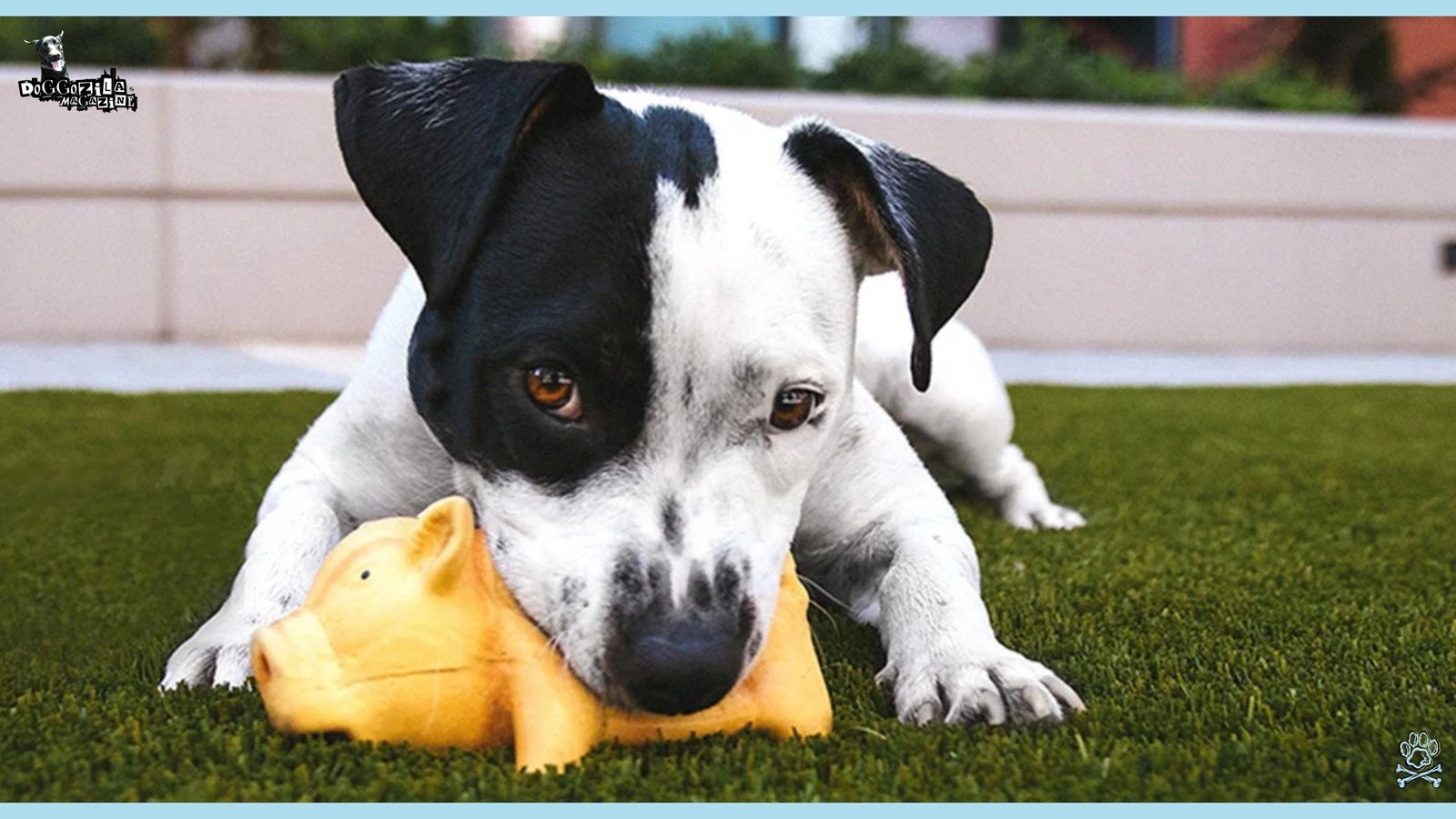
MANAGEMENT MAGIC: SETTING UP FOR SUCCESS WITH RESOURCE GUARDING IN DOGS
Think of management as your safety net and stress-reducer while you work on the longer-term behavioral changes for resource guarding in dogs. It’s not giving up, it’s smart strategy! Effective management prevents rehearsal of the guarding behavior, keeps everyone safe (human and dog), and reduces overall household anxiety.
The core principle is controlling the environment to minimize your dog’s opportunities to guard. This might mean using baby gates to confine dogs during human meal times or when you’re cooking (dropped food is a major trigger!), keeping laundry baskets and trash cans securely behind closed doors, storing all shoes and tempting items out of reach, and providing high-value chews only in crates or separate rooms.
Crate Expectations: Using Confinement Wisely for Resource Guarding Habits
Crates, when introduced positively and used appropriately, can be invaluable management tools for resource guarding in dogs. They provide a designated “safe space” where your dog can enjoy high-value items like bones or stuffed Kongs without feeling the need to guard, as no one (human or dog) will approach or bother them there. This allows them to relax and enjoy their treasure fully.
Crates are also essential for separating dogs during feeding times in multi-dog households. However, crucially, a crate should never be used punitively in the context of guarding. Forcing a guarding dog into a crate with their item will only increase their anxiety. The crate must be associated with safety and positive experiences.
Feed meals in the crate, toss treats inside, make it cozy. If your dog doesn’t love their crate, don’t force it for guarding management, use separate rooms instead. Used correctly, crates offer a peaceful solution for resource guarding in dogs.
Related Article Recommendation: Puppy Crate Training: Teach Your Dog the Safe Place
Real-Life Wins: How Smart Management Solved Resource Guarding Habits for Jake, Mia, and Dexter
Let’s share a success story! Jake and Mia had a lovable but anxious Dachshund named Dexter who began fiercely guarding corners of their living room sofa after their baby started crawling. Dexter would growl and snap if the baby crawled near “his” spot or if Jake or Mia tried to sit there. It was creating huge household stress.
The solution focused heavily on management while they worked on Dexter’s underlying anxiety:
- Physical Barrier: They used stylish, sturdy storage ottomans placed strategically along the sofa edges to physically block Dexter’s access to his guarded corners. Simple, effective, immediate relief!
- Creating a Better Option: They set up an incredibly plush, cozy dog bed right next to the sofa, warmed by the same sunbeam. They made this bed super rewarding with treats and praise whenever Dexter chose it.
- Teaching “Place”: They trained a solid “place” command for the new bed, rewarding calm stays there, especially when the baby was nearby.
- Supervised Access: Only when Dexter was relaxed and the baby was napping or contained, they allowed brief, supervised access to the sofa, immediately rewarding calm behavior and using the “off” cue (followed by a treat!) before any guarding could start.
Within a few weeks, the resource guarding in dogs behavior around the sofa vanished because the opportunity was gone, and Dexter found his new bed just as rewarding. Management created the space for positive change.
🔑 Key Points: For dogs who guard outdoor finds on walks, muzzle training (using a properly fitted basket muzzle introduced positively) can be a crucial safety tool to prevent scavenging and guarding incidents. Consistent management makes living with resource guarding in dogs manageable while training takes effect.
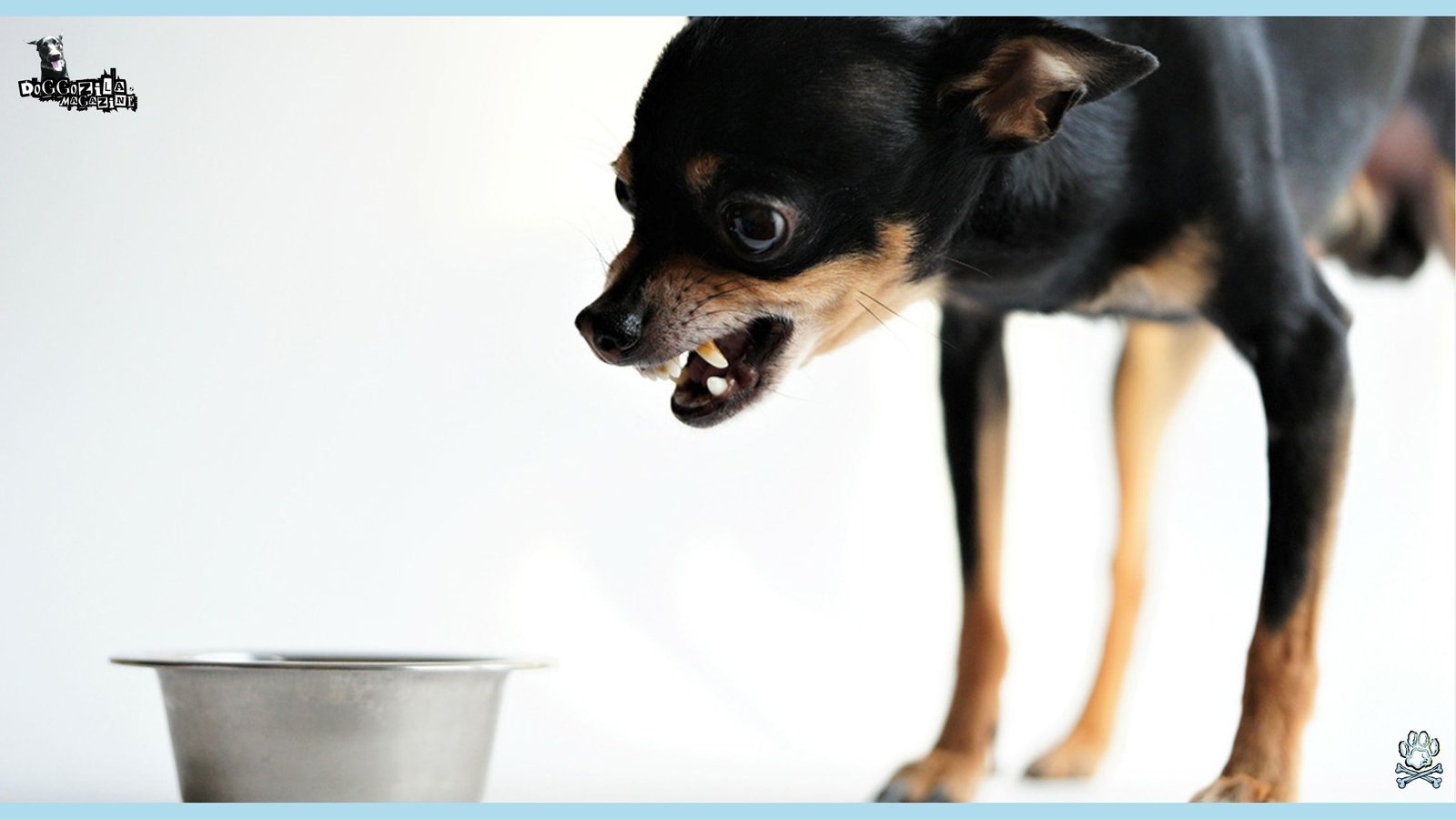
TRANSFORMING TENSION TO TRUST: POSITIVE TRAINING STRATEGIES FOR RESOURCE GUARDING IN DOGS
Forget dominance myths and forceful methods. Modern, science-based approaches to resource guarding in dogs focus on changing the dog’s underlying emotional response to perceived threats. This isn’t about suppressing growls, it’s about making the dog feel safe and secure, so guarding becomes unnecessary.
Force-free training, validated by studies like those from the University of Guelph, consistently shows significant reductions in guarding behaviors. It builds trust instead of fear. Core strategies involve systematic desensitization (gradually exposing the dog to the “trigger” at a low intensity) paired with counter–conditioning (changing the emotional association from negative to positive).
Hands Off, Treats On! The Power of Hand-Feeding for Resource Guarding Habits
Hand-feeding is a remarkably simple yet powerful technique for rebuilding trust, especially with dogs who guard food or food bowls. It directly associates human hands near food with positive outcomes. Dedicate an entire meal (or part of one) to hand-feeding. Sit calmly on the floor. Hold a handful of your dog’s kibble.
Let them take pieces gently from your open palm. If they are comfortable, progress to holding a piece between your fingers for them to take gently. You can incorporate simple obedience cues (“sit,” “look“) between pieces to build engagement.
For dogs wary of hands near their face, start by tossing the kibble near them, gradually tossing closer to your body, then eventually to your lap, then to your hand. This process teaches the dog that hands deliver food, not take it away, fundamentally shifting their perception and reducing anxiety central to resource guarding in dogs. It’s bonding and therapeutic!
Beyond “Drop It”: Building Reliable Cues for Dogs That Guard Resources
While “Drop It” is invaluable, building a repertoire of reliable cues helps manage resource guarding in dogs proactively:
- “Leave It”: This cue teaches your dog to voluntarily disengage from something tempting before they pick it up. Start with a boring item on the floor, covered with your foot. The moment they look away from it, mark (click or “yes!”) and reward from your hand. Gradually increase difficulty. This prevents guarding before it starts!
- “Trade!” (The Trade-Up Game): As described earlier, this is essential. Make trading synonymous with getting something amazing. Practice frequently with low-value items.
- “All Done”: This cue signals the end of a resource session. Teach it by saying “All done!” cheerfully when your dog finishes a chew or meal, then immediately offer a small reward for walking away. Eventually, you can use it to ask them to leave an area or item peacefully.
- “Go to Place”: Teaching a solid “place” command gives your dog a job and a safe spot to be during potential trigger times (like human meals), preventing access to dropped food and reducing guarding opportunities.
Consistent practice of these cues empowers both you and your dog in situations that might otherwise trigger resource guarding in dogs.
Case Study: Bolt’s Breakthrough – Patience and Choice Beat Resource Guarding Habits
A case study was conducted with Bolt, a terrier mix who was guarding bones with terrifying intensity, morphing into a snarling, lunging demon if anyone came near. Traditional “take it away” methods had failed spectacularly.
The breakthrough came by focusing on choice and consent:
- Safe Space Sanctuary: Bolt only got his coveted bone inside his open crate (his established safe space). No one approached the crate while he had it.
- The Cheese Rain: They periodically walked past the crate entrance and tossed incredibly high-value cheese pieces towards him (not directly at him, which could startle). No eye contact, no stopping.
- Introducing “All Done”: After several sessions of cheese rain, they added a cheerful cue, “All Done?” as they approached the crate entrance (still outside his threshold). Then they tossed several cheese pieces away from the crate entrance.
- The Choice: Amazingly, Bolt started choosing to leave the bone inside the crate to come out and get the cheese! They immediately praised, let him eat the cheese, and then closed the crate door (with the bone still inside) or put the bone away. He chose to leave the resource because something better was offered elsewhere.
Over months, this built immense trust. Bolt learned humans approaching didn’t mean automatic loss, sometimes it meant cheese! Eventually, he started bringing bones to us, a complete transformation. This case exemplifies how patience and respecting the dog’s agency can overcome even severe resource guarding in dogs.
🔑 Key Points: Use high-value rewards to teach the dog that the approach of a person or another dog predicts wonderful things, not loss. This positive reinforcement approach is the gold standard for ethically and effectively addressing resource guarding in dogs.
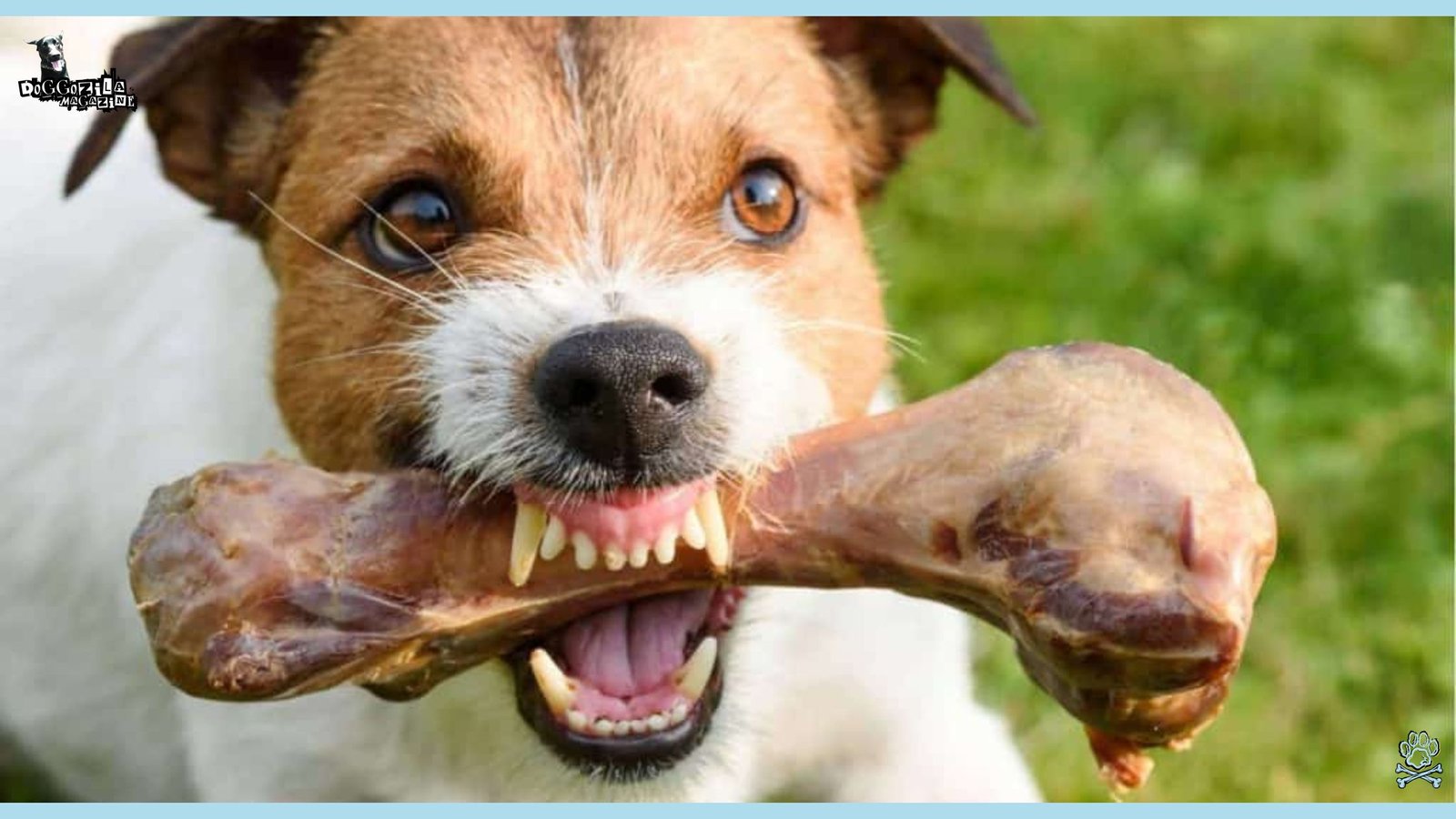
WHEN DIY ISN’T ENOUGH: SEEKING PROFESSIONAL HELP FOR RESOURCE GUARDING
While many cases of resource guarding in dogs can be managed and improved with dedicated owner effort using positive methods, some situations absolutely warrant professional intervention. Knowing when to call in the cavalry is crucial for safety and the well-being of everyone involved.
Trainers often layer in obedience cues and structured play to reinforce calm behaviors under pressure. Over weeks of steady practice, your dog starts to welcome rather than resist your approach around high-value items.
When to Seek Qualified Help?
- Bites have occurred that broke skin (Level 2 or higher on the Ian Dunbar Bite Scale).
- The guarding behavior is escalating in intensity or frequency.
- Guarding is generalizing to new and unpredictable items, people, or situations.
- Children, elderly individuals, or other vulnerable people are in the home.
- You feel scared, overwhelmed, or unsure how to proceed safely.
- Your initial positive training efforts aren’t yielding progress after consistent application.
There’s no shame in seeking expert guidance for resource guarding in dogs, it’s a responsible choice.
Finding the Right Expert: Navigating the World of Behavior Help for Resource Guarding Habits
Choosing the right professional is paramount. Beware of outdated methods that can worsen resource guarding in dogs.
Seek out:
- Veterinary Behaviorists (Dip ACVB): These are veterinarians with advanced residency training in animal behavior. They can diagnose underlying medical issues contributing to behavior (like pain) and prescribe medication if appropriate, alongside behavioral modification plans. They are the highest level of expertise for complex cases like severe resource guarding in dogs. Find one via the American College of Veterinary Behaviorists (ACVB) website.
- Certified Applied Animal Behaviorists (CAAB or ACAAB): These professionals hold advanced degrees (Masters or PhD) in animal behavior and are certified through the Animal Behavior Society. They develop science-based behavior modification plans.
- Certified Professional Dog Trainers – Knowledge Assessed (CPDT-KA) with specific experience: Look for trainers holding the CPDT-KA certification (or equivalent like IAABC – CDBC, KPA CTP) who explicitly state they use force-free, positive reinforcement methods and have significant experience successfully treating resource guarding in dogs. Ask about their specific protocols.
Crucially, AVOID anyone who:
- Guarantees a quick “cure.”
- Uses or recommends aversive tools like shock collars (e-collars), prong collars, choke chains, or alpha rolls.
- Talks about “dominance,” or “showing the dog who’s boss.“
- Advocates punishment, intimidation, or physically confronting the dog.
- Makes you feel judged or blamed. Trust your gut!
A qualified professional will prioritize safety, use humane methods, educate you, and work with you and your dog. Don’t settle for less when dealing with resource guarding in dogs.
The Final Takeaway
Resource guarding in dogs can feel like a daunting mountain to climb, but remember, it’s a behavior rooted in fear, not a character flaw in your beloved companion. By understanding the why, learning to read the subtle whispers of their body language, implementing smart management, and consistently applying positive, trust-building training techniques, you can make massive strides.
Celebrate the small victories, the first time they glance at you calmly while chewing, the successful “trade” for a sock, the relaxed sigh in their safe space. It’s a journey of patience, empathy, and partnership.
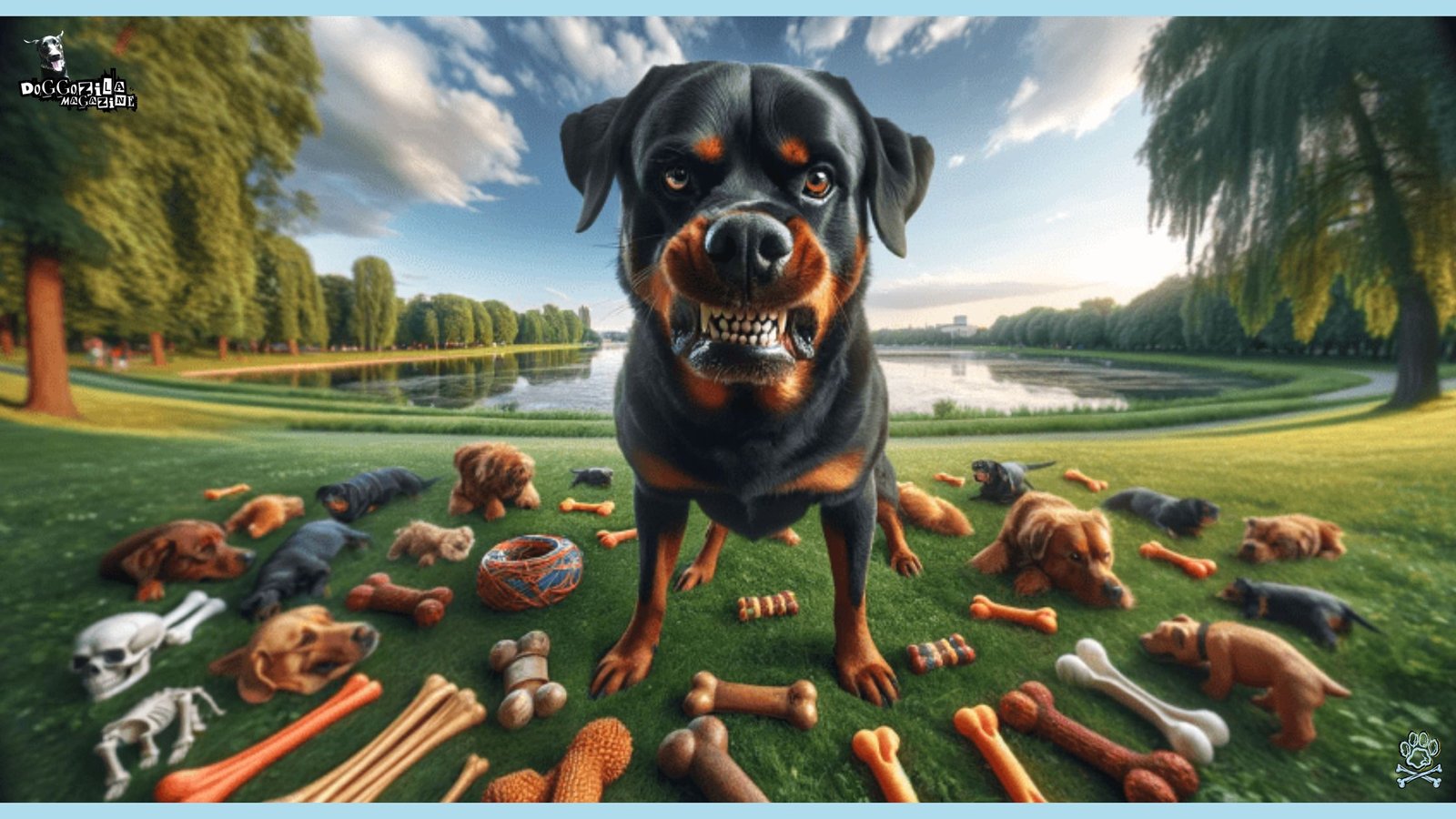
Your dog isn’t giving you a hard time, they’re having a hard time. With compassion and science on your side, you can help them feel safe enough to share their world, treasures and all.

